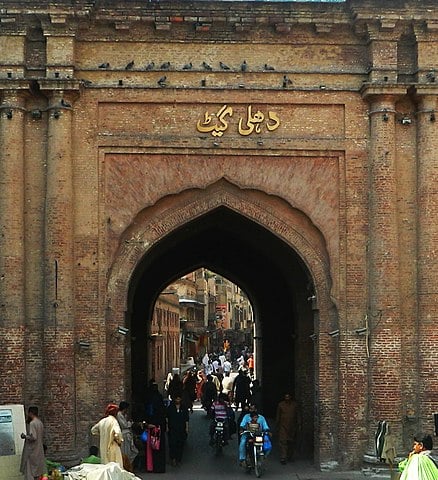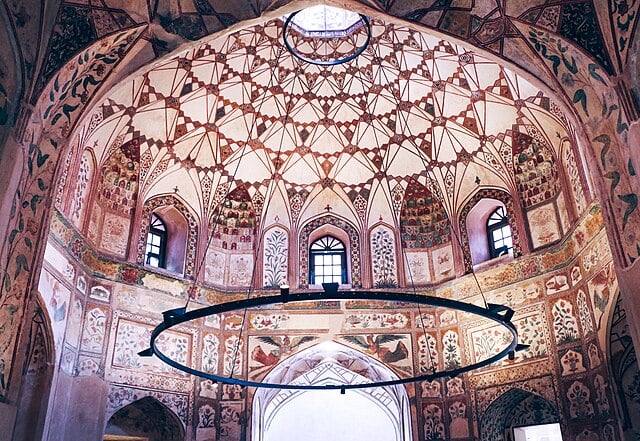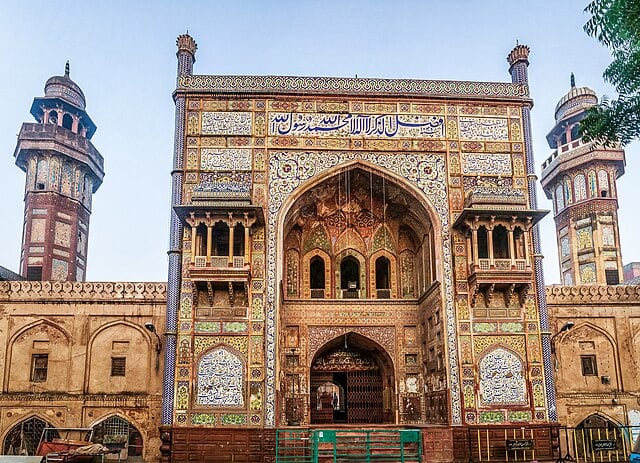Lahore has always been the center of culture and architecture, specifically the Androon Lahore, which is considered the city’s heartbeat. Several empires have entered the city and occupied it with rich and diverse traditions. The walls were created to surround the city in the 16th century when it was the capital of the Mughal Empire under Emperor Akbar and carried on by his successors, especially under Emperor Aurangzeb. As a result, the city became a protected and well-fortified area for the empire, emerging as the symbol of the magnificence of the empire.
The city emerged as a significant center for cultural growth, specifically in the arts, traditions, and crafts. It also became a focus of religious importance as many essential mosques were created. Even after the fall of the Mughal Empire, Androon Lahore existed as a crucial spot for the Sikh Empire and the British Colonial rule in 1849 and 1857, respectively. Hence, today, even the city remains the house of rich history and diverse culture, not only for the city’s residents but also for international tourists, giving a glance into the marvellous archaeological remnants of the great civilizations.
Heritage Sites Within the City
The city possesses a great and beautiful combination of the Mughal, Sikh, and British colonial eras. It also contains delicate work of tile, marble, and paintings. Ambulating through the city’s roads, one comes across the city’s remnants, including mosques, havelis, forts, tombs, and gardens. The characteristics of the Mughal era, such as red sandstone and white marble with complex geometric styles and large courtyards, can be seen through the Lahore Fort, Badshahi Mosque, and Shahi Hammam.
The Gates of Lahore
Thirteen gates surround the Walled City of Lahore; a few of them are destroyed today, but some still remain standing.
The first and foremost is the Delhi Gate, located on its southeastern side and built during the 1600s by Akbar. It serves as the major entrance to the city and is decorated with carvings, tiles, and frescoes.

Second, the Lahore or Lohari Gate, connecting the Lahore Fort and the Badshahi Mosque and witnessing the grand architectural work through arches and stone details, was erected in 1644 by Shah Jahan.
Third, the Mochi Gate, situated near the Chuna Mandi area and constructed by Akbar in 1657, focuses on simplicity yet heavy and secure walls. The gate was named behind the shoemakers and held a significant market and commercial position.
Fourth, the Roshanai Gate, built in 1566 by Akbar, reflects the significance of light and acts as a passway for the royal guests during festivals and events.
Fifth, the Shahi Gate, established by Aurangzeb in 1673, acted as an entrance to the royal quarters of the city and showed the Mughal nobility’s financial status.
Sixth, the Akbari Gate, situated 850 meters south of Delhi Gate and near the Akbar Mandi, has lost its beauty now but is still famous due to its linkage with the Akbari Mandi.
Seventh, the Yakki Gate was 170 meters east of the Delhi Gate and has been damaged now.
Eighth, the Bhati Gate, built near the western division of the city, was home to Bhattis- a Rajput clan living near it and still provides delicious food to visitors.
Ninth, Sheranwala Gate, also known as Khizri Gate, has also faced destruction today but was famous during the Mughal era.
Tenth, the Mori Gate, situated 400 meters west of Lahori Gate, is the smallest of all the gates and has been destroyed today.
Eleventh, the Masti Gate, constructed beside the Lahori Gate and the Lahore Fort, has been completely demolished, and no evidence remains.
Twelfth, the Taxali Gate, also known as Texali Gate, is close to Badshahi Mosque and held a significant position in the past due to the operation of the royal money factory over there. However, it has vanished today.
Lastly, the Kashmir Gate, built in the mid-17th century by Shah Jahan, connected the city to Kashmir and provided an essential trade route for silk, spices, and precious stones between Kashmir and India.
The Badshahi Mosque
The Badshahi Mosque is the fundamental symbol and iconic landmark of the Mughal architects, with its splendid area and graceful towers. A large mosque covering 29,867 square meters of geographical area in the country and adjacent to the Lahore fort captured visitors’ attention. Emperor Aurangzeb created the mosque in 1671-73. The mosque is made of red sandstone and marble, with 54 meters heightened, four towers that hold intricate carvings and paintings.

The mosque possesses a vast courtyard, cemented with white marble, and a large water fountain, accommodating around 55,000 people at a time. In addition, the spacious prayer hall of the mosque is decorated with geometric patterns and Quranic inscriptions in Persian calligraphy. It is a testament to the cultural and religious identity of Lahore because it serves as a key place for Muslims, particularly during Islamic festivals, such as Eid al-Fitr and Eid al-Adha.
The Shahi Hammam
The Shahi Hammam, an archaeological remnant of the Mughal era, is a well-preserved public bathhouse and evidence of the erudite engineering based on large valued ceilings used for the Mughal elites.

Constructed in 1635 under the supervision of the Mughal Emperor Shah Jahan and near the Delhi Gate. Its huge central bath area is covered with heated stone slabs, and the hypocaust system, a Roman heating method that helps the bathhouse remain warm and comfortable. Moreover, a complex water system providing hot and cold water and a furnace system beneath the floor were integrated. Its walls are incarnated by elegant carvings of flowers, geometric patterns, and intricate tilework, showcasing the finest artistic work of the Mughal era. Further, large and small windows were created to ensure ventilation and light circulation in the bathhouse. In addition, several private changing rooms and restrooms were also created to ensure the visitors’ relaxation.
The bathhouse symbolizes sanitation, hygiene, and social connectivity because it served as the place where people from all social strata met and interacted.
The Lahore Fort
The Lahore Fort, also known as the Shahi Qila, is considered a glorious landmark of the Mughal era and holds the architectural style of Persia, Central Asia, and India, established in 1566 under the reign of Emperor Akbar. It covers around 20 hectares of land, comprising palaces, gardens, halls, and gates. Its main entrance is named the Alamgiri Gate, built in 1673 by Aurangzeb Alamgir, based on large wooden doors and detailed carvings.

To add more, the Sheesh Mahal, constructed in 1631 by Shah Jahan, is a symbol of astounding mirror work and decorations. It consisted of a graceful building that acted as a leisure place for the emperor and elites. Further, the Fort consisted of Diwan-i-Aam, built in the 1630s by Shah Jahan, as the hall for the emperor to meet his subjects and hear their grievances. Likewise, the Diwan-i-Khas, constructed in 1648 by Shah Jahan, was utilised for private meetings between the emperor and his advisors and diplomats.
Consequently, the Fort, which was constituted of the Moti Masjid, built in 1655 by Aurangzeb, is an astonishing white marble, and it provided a place for emperors to pray near their chambers. Additionally, the Naulaka Pavilion was built in 1663 by Shah Jahan to show his love for his wife, Mumtaz Mahal. Further, the Shalimar Gardens, located outside the fort, reflects the love for nature of the emperors and witnesses the aesthetic designs, flowering water fountains, and beautiful layouts. Thus, the fort provides a glimpse into the historical and natural features of the Mughal era, providing a pathway for modern scholars and visitors.
The Wazir Khan Mosque
The Wazir Khan Mosque, situated in 1634 during the reign of Shah Jahan, is a spectacular remnant of the Mughal era and stands near the Delhi gate and Shahi Hammam. It acts as a place of worship for the local Muslims, providing a spiritual environment and an architectural legacy of the Mughal Empire, witnessing its aesthetic beauty. Its entrance is based on a grand gateway decorated with tiles and carvings. The prayer hall is vast in area, with high walls, tile works, and decorations like florals, birds, and geometric designs. The tiles are based on blue, green, and gold colours, providing a vibrant atmosphere to the mosque.

The mosque contains two tall minarets with floral motifs and tiles. Likewise, the Mihrab is decorated with calligraphy and tiles, which indicate the direction of Mecca and act as a central symbolic gesture for Lahore’s religious life. Similarly, even on the walls, the Quranic verses are incarnated with delicate calligraphy, which adds another significant religious feature to the mosque.
Akbari Mandi
The Akbari Mandi or Bazaar, established in the 16th century by Emperor Akbar, acted as the heart and key marketplace of the old city to promote trade, commerce, and cultural exchange. The market was used for the trade of spices, for instance, cardamom, cumin, turmeric, textiles, and other valued products, showcasing the emperor’s mission to change Lahore into a giant market force to fulfill the needs of its diverse people.
Even today, the market in the Walled City of Lahore remains a significant hub for commerce, attracting the attention of crowds and creating an energetic environment. It has transformed by accepting the tenets of modernity. Yet, it carries the historical and cultural essence at its core in the form of centuries-old buildings, narrow alleyways, and others. Besides these, the market within the walled city also attracts food lovers due to the traditional street food stalls, restaurants, and snack shops. Thus, the market acts as a cultural hub, reminding of the commerce system of the Mughal period and also a remnant of the architectural charm of the era.
The Walled City of Lahore Authority (WCLA)
Established in 2012 by the Government of Punjab to preserve the cultural heritage of Androon Lahore, the Walled City of Lahore Authority (WCLA) is responsible for looking after the affairs of the Walled City as these remnants saw several damages during the British colonial and later during the partition of India and Pakistan.
In this regard, the WCLA maintains the security and preservation of the city’s gates. Similarly, it takes several restorations and preservation measures to maintain the grandeur of Badshahi Mosque, Lahore Fort, Wazir Khan Mosque, and other areas.
Conclusion
The Walled City of Lahore is a significant historical heritage of the country, comprising mosques, buildings, gates, gardens, and others. It not only acts as an essential tourist place for nationals of Pakistan but also a source of economic rise by making it a rich tourist place for foreigners. Each part of the city is a monument to the diverse culture and history of the region, mainly the Mughal era. Be it the Badshahi mosque or the Lahore Fort, the architectural remnants of the Empire are still visible in the current Androon Lahore. Hence, the city provides a glance at history and a door to the future by providing an opportunity to turn the city into a major tourist resort in the state.
If you want to submit your articles and/or research papers, please check the Submissions page.
The views and opinions expressed in this article/paper are the author’s own and do not necessarily reflect the editorial position of Paradigm Shift.



